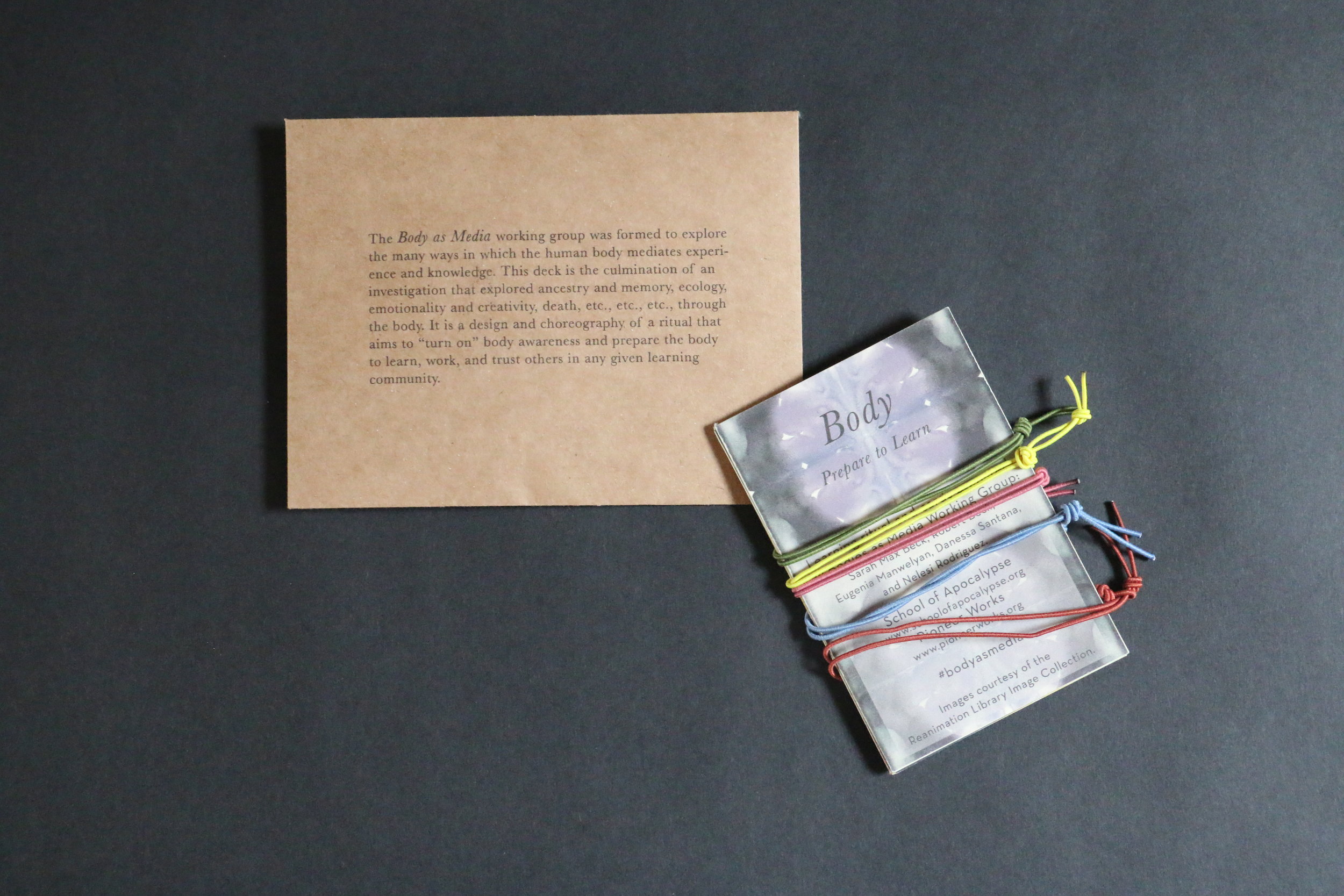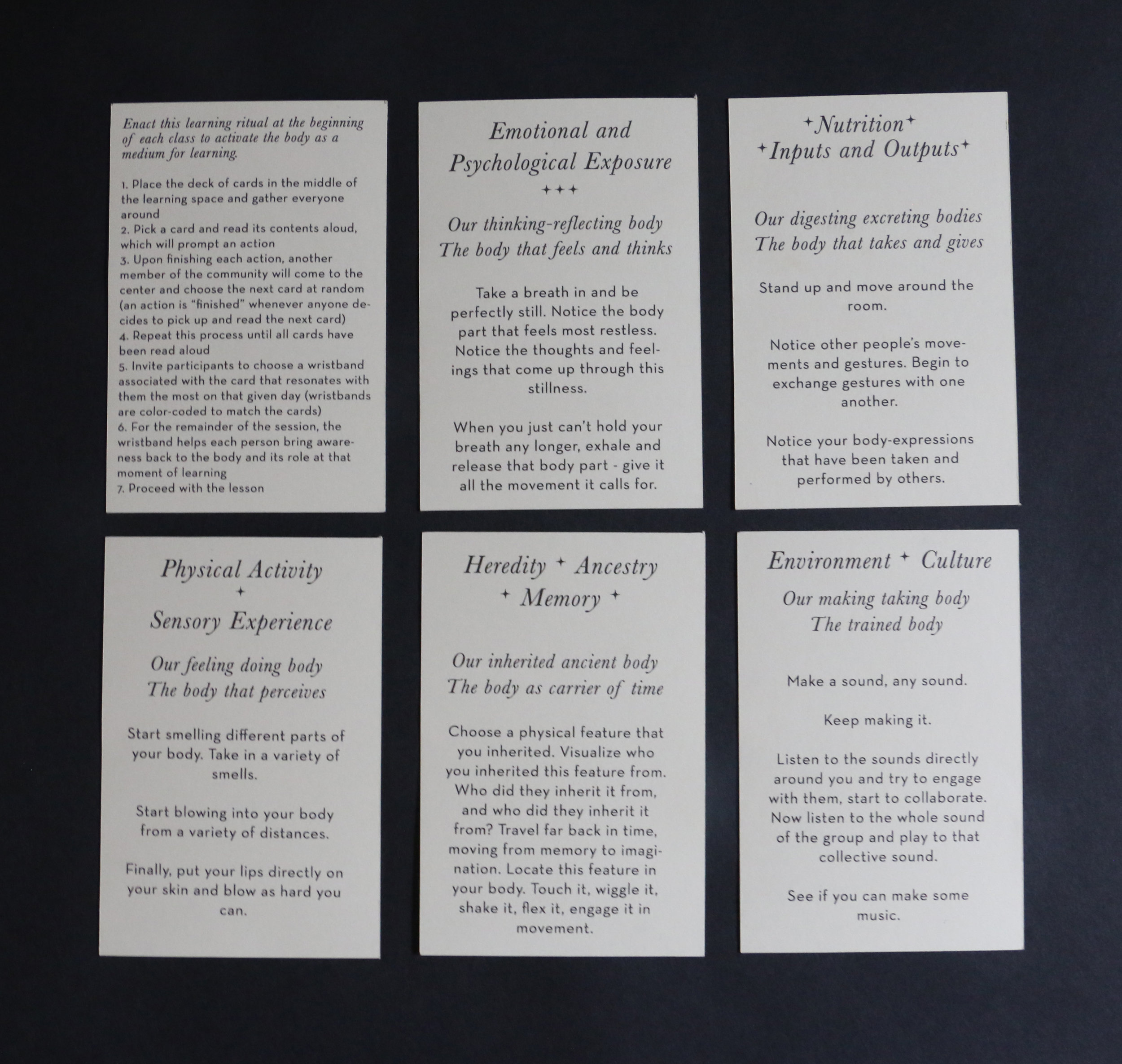2016
Contemporary society seems to be on a resolute quest to erase the human body: significant developments in virtual reality, social spaces that rely solely on digital interface, automation and drones, self-driving cars, the quantified self... represent efforts to make our world a bodiless one. And so many of our learning environments are taking these dangerous cues - teaching only to the mind and instrumentalizing the body to exhaustion.
This dream of disembodiment can and must surprise us, especially considering that throughout time people have used their bodies as means to multiple ends: they have been perceived as vessels to contain our souls, proxies that spirits and deities can use to communicate with terrestrial beings, canvases where society imprints its norms, models to understand and shape whole cities, sites and tools of the deepest learning. In this sense, the human body can be understood as the ultimate medium.
During the Fall of 2016, I co-facilitated The Bodies as Media working group, which met regularly over the course of three months to explore the many ways in which the human body mediates experience and knowledge. In our time working together, we explored ancestry and memory, ecology, emotionality and creativity, death, etc., etc., etc., through the (human) body. This working group was created in the context of the School of Apocalypse (SoA), a NYC-based initiative that examines connections between creative practice and survival and seeks to develop new modes of inquiry and apply broader levels of experience to intellectual investigation. The culmination of our joint investigation is a tool (a deck of cards and a set of wristbands) with instructions on how to perform a learning ritual that aims to “turn on” people’s body awareness and prepare their bodies to learn, work, and trust others in any given learning community.
Collaborators: Eugenia Manwelyan, Danessa Santana, Sarah Beck, Robert Beck.



